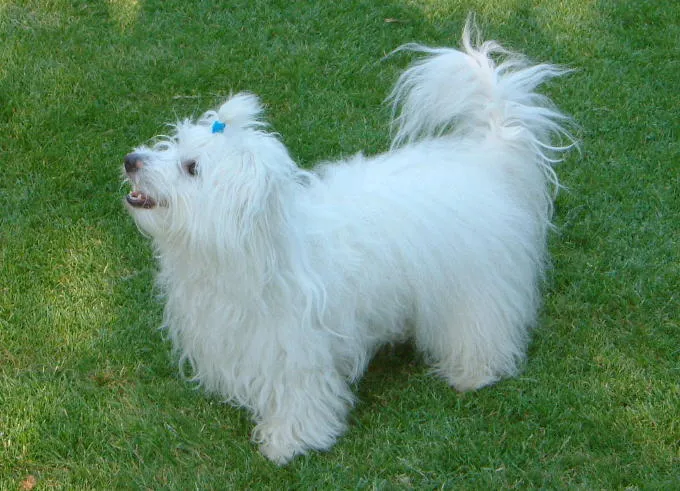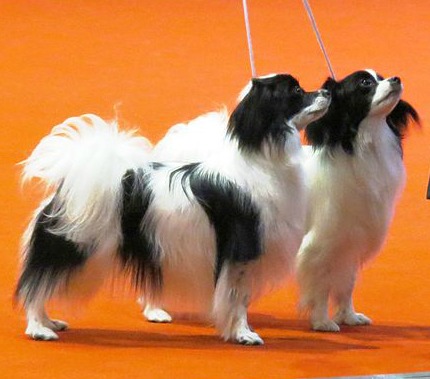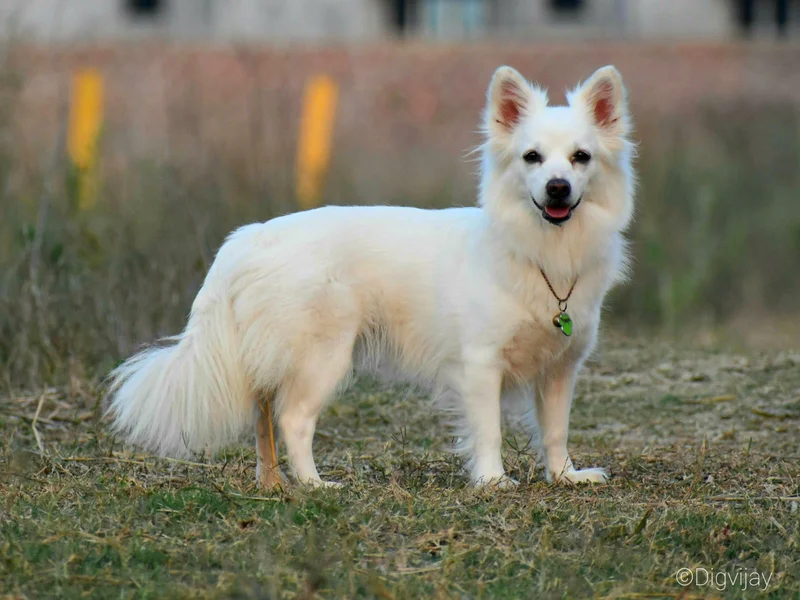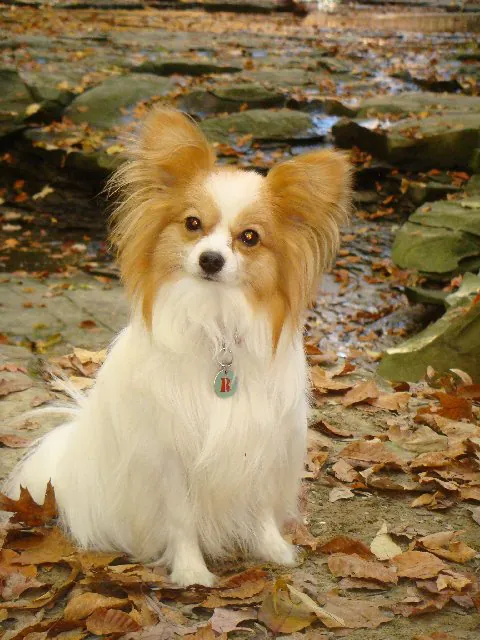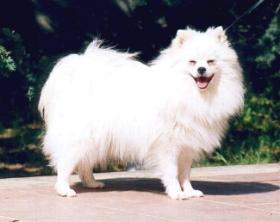Havanese
The Havanese is a small, affectionate dog known for its playful nature and charming personality. With a silky coat and friendly demeanor, they make excellent companions for families and individuals.
Overview
🐕Breed Overview
✨Key Traits
💡What Makes Havanese Special
Havanese dogs are characterized by their affectionate nature and playful spirit. They are highly trainable, often excelling in obedience and agility training.
Their friendly demeanor extends to strangers, making them excellent companions for families and individuals alike. Havanese are known for their adaptability, thriving in both urban and rural settings.
Their non-shedding coat is a plus for allergy sufferers, but it requires regular grooming to maintain its quality. Overall, the Havanese is a delightful breed that brings companionship and joy to any household.
The Havanese, a charming member of the Bichon family, is known for its affectionate and playful nature. Originating from Cuba, this small breed has a rich history as a beloved companion to the elite and a performer in circuses. 5 inches and a weight of 7 to 13 pounds, the Havanese is sturdy yet compact, making it an ideal pet for families and individuals alike.
Their long, silky coat comes in various colors, requiring regular grooming to prevent matting. Havanese are energetic and require daily exercise, which can be met through short walks and play sessions. They are highly trainable, eager to please, and thrive on human interaction, making them excellent companions for families with children and other pets.
Their friendly disposition extends to strangers, and they are known for their vocal nature, alerting owners to visitors without being overly aggressive. With a lifespan of 12 to 14 years, the Havanese is a healthy breed, though they may be prone to certain health issues like patellar luxation. Overall, the Havanese is a delightful companion, bringing joy and laughter to any household.
🎉Fun Facts
Havanese dogs are often referred to as 'Velcro dogs' due to their strong attachment to their owners.
The Havanese is the national dog of Cuba.
They are known for their unique springy gait, which is a result of their structure.
Breed Characteristics
Family & Friends
Good Behavior
Get Up & Go
Household Harmony
Temperament & Personality
✨Key Traits
🐕Core Temperament
The Havanese is friendly, playful, and intelligent, with a sweet disposition. They are known for their affectionate nature, forming strong bonds with their families.
This breed is generally non-aggressive and enjoys being around people and other pets. Their playful spirit makes them great companions for children, although supervision is recommended to prevent accidental injury.
Havanese dogs thrive on attention and do not do well when left alone for extended periods. Their curious and busy nature keeps them engaged, and they are often described as 'Velcro dogs' due to their tendency to follow their owners around.
💫Personality Profile
The Havanese is a lively and affectionate breed, known for its friendly disposition and playful nature. They thrive on human interaction and are happiest when they are the center of attention.
This breed is known for its intelligence and eagerness to please, making them relatively easy to train. Havanese are generally good with children and other pets, showcasing their friendly and social nature.
They enjoy playtime and are often described as clowns, bringing joy and laughter to their families. While they can be vocal, they are not excessively yappy, making them suitable for various living situations.
🔊Vocal Tendencies
Havanese are known for their vocal nature, often barking to alert their owners of visitors or when they want attention. While they are not excessively yappy, they do enjoy communicating with their families.
Their barking can be managed through training, and they typically stop once acknowledged. This breed is not known for being aggressive, and their friendly disposition makes them more likely to greet strangers with enthusiasm rather than barking.
Affection & Social Traits
Energy & Activity
Communication Style
Care Requirements
🏃♂️Exercise Requirements
Daily Exercise
The Havanese is a lively breed that enjoys playtime and social interaction. While they are energetic, their exercise needs can be met with a short walk or a good play session.
Ideally, they should engage in at least 30 minutes of exercise daily, which can include walks, fetch games, or interactive play with toys. Puppies may require shorter, more frequent play sessions, while senior dogs may benefit from gentler activities to accommodate their energy levels.
Regular exercise is crucial for maintaining their physical health and mental well-being, as it helps prevent boredom and associated behavioral issues. Insufficient exercise can lead to weight gain, anxiety, and destructive behaviors, so it's essential to keep them engaged and active.
Preferred Activities
🏠Living & Adaptability
Space Requirements
Havanese dogs are adaptable and can thrive in various living environments, including apartments and houses. They do not require a large yard, but a small, secure outdoor space for playtime is beneficial.
Owners in smaller spaces should ensure their dogs receive adequate exercise through regular walks and indoor play. Due to their small size and friendly nature, they can comfortably live in urban settings, provided they have opportunities for social interaction and exercise.
Climate Preference
🍲Feeding Guide
Schedule
Food Types
Portion Size
Special Nutritional Needs
Havanese may have sensitivities to certain ingredients, so a high-quality diet with limited fillers is recommended. Regular veterinary check-ups can help identify any specific dietary needs or allergies.
✨Grooming Requirements
Grooming Overview
The Havanese has a long, silky coat that requires regular grooming to prevent tangles and mats. Owners should brush their Havanese at least two to four times a week, using a slicker brush and a comb to ensure all knots are removed.
Bathing should be done as needed, typically every four to six weeks, using a gentle dog shampoo. After bathing, it's essential to dry their coat thoroughly and comb it out to prevent matting.
Regular trimming around the feet and face can help maintain a tidy appearance. Owners may choose to keep their dog's coat longer for show purposes or opt for a 'puppy cut' for easier maintenance.
Care Schedule
Brush 2-4 times a week; bathe every 4-6 weeks; trim nails every 2-3 weeks.
Health Profile
⚕️Health Care
Regular veterinary care is essential for maintaining the Havanese's health and longevity. Routine check-ups, vaccinations, and preventive treatments can help catch potential health issues early.
Dental care is also important, as small breeds are prone to dental problems. A balanced diet and regular exercise contribute to overall health and can help prevent obesity-related issues.
Health Issues Overview
⏳Average Lifespan
Genetic Factors
Genetics play a crucial role in the Havanese's lifespan, with certain hereditary health issues being more prevalent in the breed. Responsible breeding practices, including health testing for common conditions, can help reduce the risk of genetic disorders. Potential owners should seek reputable breeders who prioritize health and genetic diversity to ensure a healthy puppy.
Living Conditions
The Havanese thrives in environments where they receive plenty of attention and interaction. They do well in both urban and rural settings, provided they have opportunities for exercise and socialization.
A loving home with regular companionship can significantly enhance their lifespan, as they are prone to separation anxiety if left alone for long periods. Ensuring a safe and stimulating environment with regular activities can promote their overall health and longevity.
🏥Common Health Issues
Patellar Luxation
Warning Signs
🔬Diagnosis
Veterinarians typically perform a physical examination to assess the knee joint's stability.
💊Treatment
Surgical intervention may be necessary in severe cases.
📝Management Tips
Maintain a healthy weight, provide joint supplements, and consult a veterinarian for treatment options if symptoms arise.
Legg-Calve-Perthes Disease
Warning Signs
🔬Diagnosis
X-rays are used to confirm the diagnosis of this hip condition.
💊Treatment
Surgery to remove the affected femoral head.
📝Management Tips
Surgical options may be recommended to alleviate pain and improve mobility.
Mitral Valve Insufficiency
Warning Signs
🔬Diagnosis
Ultrasound and echocardiogram are used to assess heart function.
💊Treatment
Medications to manage heart function.
📝Management Tips
Regular veterinary check-ups and medications can help manage symptoms.
🛡️Preventive Care
🔬Patellar Evaluation
Evaluates the stability of the knee joint and checks for luxation.
📅 Annually or as recommended by a veterinarian.
🔬Cardiac Evaluation
Assesses heart function and detects any abnormalities in heart structure.
📅 Every 1-2 years, especially in older dogs.
🔬Ophthalmic Examination
Checks for common eye diseases and conditions that can affect vision.
📅 Annually or as recommended by a veterinarian.
Training
🧠Intelligence & Trainability
💪Work Drive
Havanese thrive on mental stimulation and enjoy tasks that involve interaction with their owners. Activities such as agility training, obedience classes, and interactive games can keep them mentally engaged.
Their natural curiosity and playful nature make them well-suited for learning new tricks and participating in dog sports. Providing them with regular challenges and socialization opportunities is essential for their overall well-being.
⚠️Training Considerations
While Havanese are generally eager to please and trainable, they can be vocal, which may pose challenges in quiet environments. They may bark to alert their owners of strangers or when they want attention.
To mitigate this, early socialization and training are essential. Teaching them the 'quiet' command and rewarding calm behavior can help manage excessive barking.
Additionally, their playful nature may lead to mischievous behaviors if they are not adequately stimulated, so providing engaging toys and activities is crucial.
📝Training Tips
Havanese respond well to positive reinforcement training methods. Start training early, focusing on basic commands and socialization with people and other pets.
Use treats, praise, and play as rewards to keep them motivated. Consistency is key, so establish a routine for training sessions.
Havanese are intelligent and can learn tricks and commands quickly, making them one of the easier toy breeds to train. Incorporating play into training can enhance their engagement and enjoyment.
History & Heritage
📜Origin Story
The Havanese's origins can be traced back to the Mediterranean, where small bichon-type dogs were bred. These dogs were brought to Cuba by Spanish traders, who gifted them to wealthy Cuban women. As the breed adapted to the island's climate and lifestyle, it became known as the Havanese.
The breed's popularity surged in the 19th century, but it faced decline during the Cuban Revolution. S. helped revive the breed, leading to its recognition by the AKC in 1996.
Today, the Havanese is celebrated for its charm and companionship, making it a cherished pet worldwide.
⏳Development History
The Havanese descends from small dogs brought to Cuba by Spanish traders in the 16th century. ' However, the breed faced near extinction during the 20th century, with only a few remaining in Cuba.
In the 1950s and 1960s, three families emigrated to the United States with their Havanese, leading to the breed's revival. S.
🛡️Purpose & Historical Role
Originally bred as lapdogs and companions for the elite, the Havanese has evolved into a beloved family pet. Their playful and affectionate nature makes them ideal companions for people of all ages.
Historically, they also served as performers in circuses, showcasing their intelligence and trainability. Today, they excel in various roles, including therapy dogs and agility competitors.
🏺Cultural Significance
The Havanese is Cuba's national dog and has a rich history intertwined with the island's culture. Originally bred as companion animals for the wealthy, they were cherished for their playful nature and charming appearance.
The breed's popularity soared in the 19th century, with notable figures like Queen Victoria and Charles Dickens owning Havanese. Their role as performing dogs in circuses across Europe further solidified their place in popular culture.
Today, the Havanese continues to be celebrated for its affectionate demeanor and adaptability, making it a beloved family pet worldwide.
Conservation Status
This breed is well-established with healthy population numbers.



